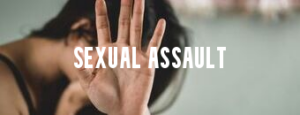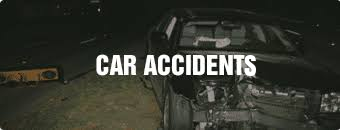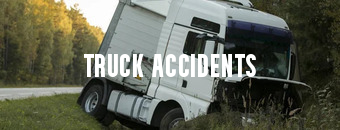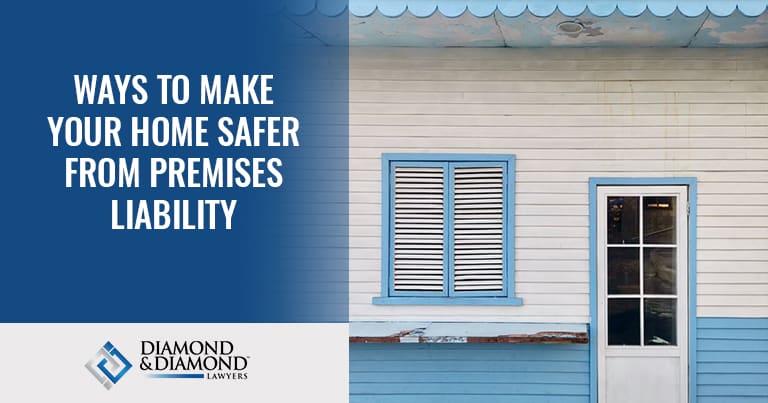Hearing about a slip and fall injury is already terrifying. And to make the situation worse, it happened in one of your properties. When this occurs, there is a high possibility that you will soon receive a call informing you that someone had filed a premises liability case against you.
Regardless of whether you own or rent a house or a building, the area that is covered by your property is your liability. This means that you are responsible for visitors, neighbors, and even strangers passing by the property. Still, you should keep in mind that there are limits to an owner’s liability.
Premises liability holds property owners and residents liable for accidents and injuries that occur on their property. The types of incidents that may result in premises liability claims can range from a slip and fall on a public sidewalk to an injury suffered on an amusement park ride.
You probably know that if someone suffers an injury on your property, you risk getting sued. So, as a property owner, you should always keep your premises maintained and free from hazards to prevent getting sued with premises liability.
It is also good to know the areas in your property prone to hazards and ensure that you are covered with the proper insurance. Read on to learn more about other ways on how to make your home safer from premises liability.
Identify and Secure Dangerous Areas
In premises liability cases, most of the complaints come from people who have been injured in walkways, stairwells, and swimming pools. They often link their injuries to unlit areas, slippery floors, and lack of signages.
To avoid injuries, both the property owner and the ones on it should make sure that they are always on the lookout for probable hazards.
As a property owner, it is good to regularly assess accident-prone areas and make repairs if needed to lower the chance of accidents occurring. Below are activities that you can do to secure and maintain dangerous areas on your property:
- Regularly walk around your property to spot hazards. Diligently monitor potentially unsafe conditions.
- Always keep walkways free of any clutter, spills, or objects in walkways.
- Routinely check walkways for new hazards, like cracks in the sidewalks, uneven surfaces, or leaking rain gutters that empty onto the area.
- Routinely check the stairwell for spills, hazards, and anything that may cause someone to trip.
- Regularly remove anything near your fences or gates, as someone can use them to climb the fence and get injured.
When performing these activities, you must do them both indoors and outdoors. This way, anything that may cause a premises liability will be identified immediately, and you can draft a plan to eliminate them.
Clean Up and Repair Any Hazards As Soon As Possible
 After assessing the accident-prone areas, the next step is to clean them up and repair the hazards you found. This helps limit the risk of injury on your property.
After assessing the accident-prone areas, the next step is to clean them up and repair the hazards you found. This helps limit the risk of injury on your property.
We have prepared a list that may help you know where to focus. If you notice these hazards in your property, fix them as soon as possible:
- Remove any clutter from the steps and the landings. Be sure there is nothing on the steps themselves, like toys or debris.
- Improve the surface of highly trafficked areas to make them slip-resistant. This could mean putting down rugs, non-slip mats, or even coating the walkway with a material that has slip-resistant properties.
- Regularly shovel ice and snow off the walkway during the winter season.
- Always keep walkways free of any clutter, spills, or objects in walkways.
- Clean up slippery walkways that could be a hazard for slip and fall.
- If you have an upstairs, repair any floor holes that could lead to tripping.
- Keep your pool deck and surrounding areas free of clutter. Lock up any pool chemicals to prevent accidental poisoning. Most chemicals used in pools are extremely toxic and can be deadly.
- If an unsafe condition is discovered or even suspected, it must be corrected immediately. You should not assume that someone else will clean up the spill, flatten the entryway mat, or clear ice and snow off the walkway.
Install Adequate Lighting
When walking along dark hallways or corridors, there are instances when you won’t see clutter or spilled liquids on the floor. This may cause you to slip and fall and sustain personal injuries.
It is essential to have enough lighting on your property, especially at night. To lower the risk of someone experiencing accidents in inadequately lit areas, follow these tips:
- Install automatic emergency lights outside and in the walkways or manually turn on outside lights at night.
- Ensure that the walkway is well lit in every area so that all walking paths are visible, even at night.
- Again, like the walkways, be sure there is plenty of lighting to illuminate the steps. The more lighting, the more easily your guests can see each step.
Having proper lighting on your property will help people to be more aware of their surroundings.
If a lack of maintenance or upkeep leads to someone getting hurt at your house, you could be held responsible. If this happens to you, you should consult an experienced personal injury lawyer to ensure that your legal rights are fully protected. Contact Diamond and Diamond Law at 1-800-567-HURT for more information on premises liability!
Display Warning Signs
Cleaning, organizing, and fixing areas in your property is easy. However, some unsafe conditions or hazards can’t be corrected immediately. An example of this is a wet floor that still needs drying. To prevent accidents in an area with wet floors, you can use a “wet floor” sign to ensure that customers and employees will take extra care when walking on the damp floor.
To help you know what signages and other safety features to put up and where to place them, take a look at the list below:
- Add signage to hazardous areas or places that will pose a risk to visitors. These include the swimming pool, the room with heavy equipment, the animal cages, or any other damaged part of the property.
- Add a sturdy handrail on one or both sides of the stairs. Make sure it’s made of a material that is easy to grip and long-lasting, like metal.
- Check to ensure that any existing or newly installed handrails are properly secure and not loose in any way.
- As with walkways, make the landing at the bottom and the top of the stairs slip-resistant. You can do this by adding no-slip mats, carpeting, or coating with a non-slip coating.
Carry Adequate Insurance Coverage to Protect Against Premises Liability
To further protect yourself from premises liability, it is a good idea to have enough insurance to protect you from financial losses when an accident happens. In most homeowners’ insurance policies, a premises liability insurance has already been bundled with it so if you’re planning on getting one, make sure to review your policy first.
Get Free Legal Help for a Premises Liability Injury Case
Suppose you or a loved one have suffered a premises liability injury. In that case, you should speak with an experienced lawyer to ensure that your legal rights to compensation are fully assessed and protected.
On the other hand, if you are being held liable for an injury that happened within your house or property, you should also seek legal advice and help from experienced premises liability lawyers.
Contact Diamond and Diamond Law’s experienced lawyers at 1-800-567-HURT today!














